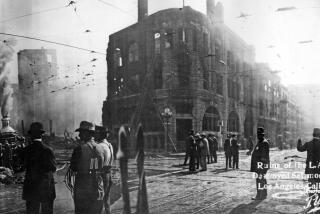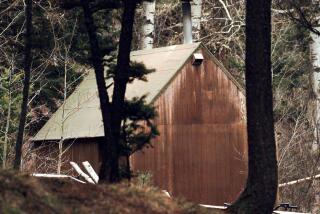Recap of the Unabomber Case
Here is an overview of the life of Theodore Kaczyniski, the events leading up to his arrest and trail:
A SOLITARY LIFE
May 22, 1942: Born in Chicago. Brother David born 1950.
1958: Enters Harvard at age 16, receives bachelor’s degree in mathematics in 1962. Goes on to earn a master’s in 1964 and a doctorate in 1967 at the University of Michigan.
1967: Hired as an assistant professor of mathematics at UC Berkeley. Abruptly resigns in June 1969.
1971-96: Begins writing anti-technology tracts. Kaczynski brothers buy land near Lincoln, Mont., where Theodore Kaczynski later builds a small cabin and spends most of his time living as a hermit.
THE BOMBINGS
May 26, 1978: First bombing. A package found May 25 at University of Illinois in Chicago is returned to addressee at Northwestern University where it explodes, injuring one person.
1978-85: Several people are injured by bombs planted at or mailed to addresses in Illinois, Utah, Tennessee, California, Washington, Michigan and aboard an airplane. Investigators come to the conclusion that the bombings are the work of one person or group.
Dec. 11, 1985: The first fatality. In Sacramento, Hugh Scrutton, 38, is killed when he moves a bomb disguised to look like discarded lumber behind his computer store.
Feb. 20, 1987: Unabomber is spotted in Salt Lake City wearing a hooded sweatshirt and aviator sunglasses while placing a bomb. Attacks cease for six years.
June 22, 1993: UC San Francisco geneticist Charles Epstein severely injured by a bomb mailed to his home.
June 24, 1993: Yale University computer scientist David Glernter suffers extensive injuries when a bomb explodes in his office.
Dec. 10, 1994: Advertising executive Thomas Mosser, 50, is killed by a bomb sent to his North Caldwell, N.J. home.
April 24, 1995: Timber industry executive Gilbert P. Murray, 47, is killed when he opens a package mailed to his Sacramento office.
June 27, 1995: In a letter to a newspaper, the Unabomber threatens to blow up an airliner ouf of Los Angeles. Threat throws airports nationwide into disarray and prompts lasting changes in airport and postal security.
Sept. 19, 1995: Unabomber’s 35,000-word manifesto against technology published. It begins: “The Industrial Revolution and its consequences have been a disaster for the human race.”
SUSPICION AND ARREST
October 1995-February 1996: Noting similarities in the manifesto to his brother’s letters, David Kaczynski begins making contacts that lead to him telling the FBI of his suspicions.
April 3, 1996: Theodore Kaczynski is taken into custody by federal officials who had monitored his cabin as part of their investigation.
INDICTMENT AND TRIAL
June 18, 1996: A federal grand jury in Sacramento hands down a 10-count indictment against Kaczynski for the fatal attacks on Scrutton and Murray and the attacks on Epstein and Gelernter.
June 25, 1996: Pleads not guilty.
May 15, 1997: Government says it will seek the death penalty. Kaczynski’s relatives dismayed.
Nov. 12-Dec. 22, 1997: Jury selection. Judge meets with Kaczynski and his lawyers to discuss what later is revealed to be a dispute over defense strategy to portray him as mentally disturbed.
Jan. 5, 1998: Kaczynski renews his request to fire his attorneys and hire a lawyer to present a political defense. Request denied.
Jan. 8, 1998: Asks to serve as own attorney. Reports surface that he attempted suicide in his cell the previous evening. Judge orders competency evaluation.
Jan. 17, 1998: Kaczynski found competent to stand trial, but psychiatric evaluator says he is also probably a paranoid schizophrenic, as his lawyers have maintained.
Jan. 22, 1998: After judge rejects his request for self-representation, Kaczynski agrees to plea bargain.
THE CABIN
The 10- by 12-foot plywood shack, roofed with tar paper, had no running water and no electricity. Kaczynski slept on a narrow cot and had more than 200 books, including Shakespeare and Thackeray, stacked against the walls.
Federal agents seized as evidence:
* A completed bomb and a partially constructed bomb
* A copy of the Unabomber manifesto
* A handwritten diary, written in code, allegedly containing incriminating statements
* A typewriter that appeared to match the writing of some Unabomber documents
* Tools and chemicals which could be used in making bombs
* More than 20,000 documents, some with the identifying code, 553-25-4394, the Unabomber used in the Unabomber’s writings to verify his authenticity.
From Times’ files and wire reports
More to Read
Sign up for Essential California
The most important California stories and recommendations in your inbox every morning.
You may occasionally receive promotional content from the Los Angeles Times.










